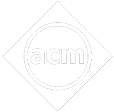- Written By
Sushmita Rout
- Last Modified 25-01-2023
You have landed on the right page to learn about Mole Fraction Formula. Chemists primarily need concentration units to express the number of particles that react in a particular chemical equation. Since percentage measurements are based on either mass or volume, they are generally not useful for chemical reactions. Measurements based on moles are more helpful in expressing the concentration of solutions.
A mole is simply a unit of measurement. A mole is defined as the amount of a substance that contains exactly ‘elementary entities’ of the given substance. The term elementary entity refers to atoms, ions, or molecules. The value is known as Avogadro’s number represented by .
In a solution, a Mole fraction is defined as the ratio of moles of one component to the total moles present in the solution. It is denoted by . Suppose we have a solution containing as a solute and as the solvent. Let be the number of moles of (solute) and be the number of moles of (solvent). Then, Mole fraction can be expressed as-
Mathematically, it is expressed as:
Practice on Mole Fraction (X) Questions Here
Example –
Calculate the mole fraction of a solution made by and of water.
, molar mass of
Moles of ,
molar mass of
Moles of ,
Mole Fraction in the Vapor Phase
By Raoult’s Law, we know that the vapor pressure of the solvent above a solution containing a non-volatile solute (i.e., a solute that does not have a vapor pressure of its own) is directly proportional to the mole fraction of solvent in the solution. This behavior is summed up as follows:
Where,
is the vapor pressure of the solution
is the mole fraction of the solvent
is the vapor pressure of the pure solvent
If a volatile solute is added to the solution, each solution’s component is added to the total pressure.
Note that
1. when (pure solvent), and
2. when (solute(s) present), (i.e., the vapor pressure of the solvent in solution is lower than the vapor pressure above the pure solvent).
The following graph shows the vapor pressure for water (solvent) at as a function of the mole fraction of water in several solutions containing sucrose (a non-volatile solute).
An increase in the concentration of sucrose leads to the decrease in the vapour pressure of water.
According to Raoult’s Law, the partial vapor pressure of two components, solvent and solute , of a solution may be given as:
……….eq
Total pressure is given by-
Where and are respective vapor pressures in pure form and are respective mole fractions of components and .
The decrease in vapor pressure of the solvent is given by-
……..eq
Substituting eq in eq , we get-
……..eq
We know the total mole fraction of a solution is equal to . So,
……….eq
Substituting eq in eq , the decrease in vapor pressure of the solvent is given by-
Using eq in the above equation, we get,
Where, is the number of moles of the solute and is the number of moles of the solvent.
For dilute solutions, , hence,
The above equation can be written as-
The molality of a solution is defined as the number of moles of the solute present per kilogram of the solvent.
Mathematically, it is expressed as–
Its unit is .
The mole fraction of solvent is given by-
……..eq
The mole fraction of solute is given by-
……eq
Dividing eq by eq , we get-
Thus,
Relation between Molarity and Mole Fraction
Q.1. A solution is prepared by mixing of water, , and of ethanol, . Calculate the mole fractions of the components of the solution.
Ans: Moles of
Moles of
Mole Fraction of
Mole Fraction of
Q.2. Calculate the mole fractions of sugar and water in .
Ans: Molality is moles of solute dissolved per of the solvent. We know our solution is:
of means moles of is dissolved in of water.
Moles of
Mole Fraction of
Mole fraction of water
Q.3. Calculate the amount of water (grams) required to dissolve grams of sucrose to prepare a solution having fraction of sucrose.
Ans: Mole Fraction of
Let the moles of water required to make the solution mole fraction of sucrose be .
Amount of water (grams)
Summary
Mole is the SI unit of the amount of substance. It plays a vital role in chemical reactions because it gives us a more concrete idea about the amount of substance participating in chemical reactions. In this article, we learned the formula for calculating the mole fraction of a substance. We also learned its relationship with Raoult’s law, molarity, and morality.
FAQs
Q.1. How do you find the mole fraction?
Ans: Mole fraction of solute and solvent can be expressed as-
Q.2. What is a mole fraction? Write its formula?
Ans: Mole fraction is defined as the ratio of moles of one component to the total moles present in the solution. It is denoted by . Mole fraction of solute , and solvent can be expressed as-
Q.3. How do you calculate mole fraction with pressure?
Ans: By Raoult’s Law, we know that the vapor pressure of the solvent above a solution containing a non-volatile solute (i.e., a solute that does not have a vapor pressure of its own) is directly proportional to the mole fraction of solvent in the solution. This behavior is summed up as follows:
Where,
is the vapor pressure of the solution
is the mole fraction of the solvent
is the vapor pressure of the pure solvent
If a volatile solute is added to the solution, each solution’s component is added to the total pressure.
Q.4. Can a mole fraction be greater than ?
Ans: No, a mole fraction value cannot be greater than . This is because the sum of mole fraction of all components in a solution is equal to . However, the mole fraction of individual components is always less than .
Q.5. Is mole fraction equal to partial pressure?
Ans: Mole fraction is not equal to partial pressure because the partial pressure of an individual gas is equal to the total pressure multiplied by the mole fraction of that gas.
Q.6. Can a mole fraction be negative?
Ans: It is impossible to have a negative mass of solute and solvent. Hence a negative amount of moles is also not possible. Therefore, it is impossible to have a negative mole fraction.
Q.7. What is numerical value of mole?
Ans: The numerical value of mole is ‘elementary entities’ of the given substance. The term elementary entity refers to atoms, ions, or molecules. The value is known as Avogadro’s number represented by .
Q.8. What is the sum of mole fraction of all components?
Ans: The sum of mole fraction of all components of a solution is unity.
Practice Questions on Concentration Terms & Concentration of Solutions
We hope this detailed article on mole fractions is helpful to you. If you have any queries on this article or in general about Mole Fraction, ping us through the comment box below and we will get back to you as soon as possible.









































